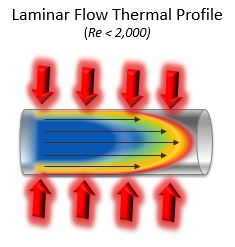On May 17, 2017 Paratherm’s Product Manager Ryan Ritz presented The Effects of Fluid Flow Dynamics on Thermal Fluid Performance.
The one-hour webinar was presented live, and then was available to stream on-demand for three months, through August 2017, on the Globalspec IEEE website.
And now, you can still experience the presentation, in its entirety, as an on-demand stream here on Paratherm’s Fluid Force Blog.


Key Takeaways:
- Learn the fundamentals of heat transfer and fluid flow dynamics and how they are inherently tied together in thermal-fluid system performance
- Understand why physical movement of fluid (turbulent flow) is critical to energy movement (heat transfer) throughout the entire system
- Gain a better understanding of the difference between “bulk” and “film” sections of the fluid profile and why each is important
- Learn about the critical design elements of the fluid, system and operating conditions that directly influence fluid efficiency and lifespan
- Discover helpful “best-practices” that will optimize performance, extend fluid life, prevent compounded failures and avoid significant losses
Register Below to View the One-Hour Webinar Now!
Webinar Overview:
Thermal fluids are widely used across processing industries for their ability to provide uniform, efficient temperature control. Improper fluid flow leads to inefficient heat transfer and premature fluid degradation. This presentation will introduce fundamentals of heat transfer and fluid flow dynamics; tying the topics together to show how you can avoid serious problems by following simple maintenance, operating, and design practices.



